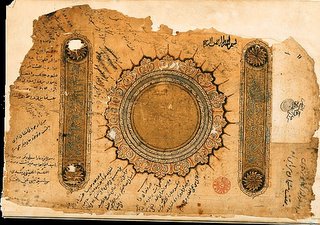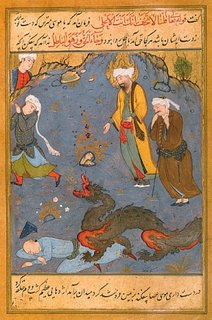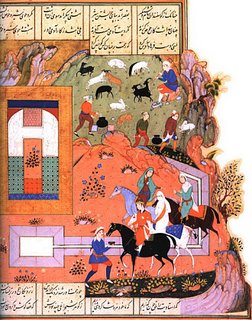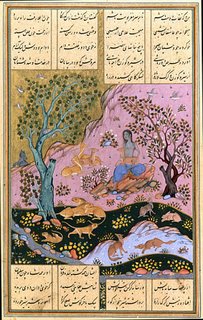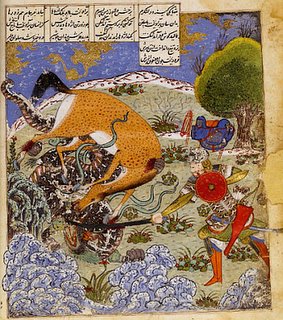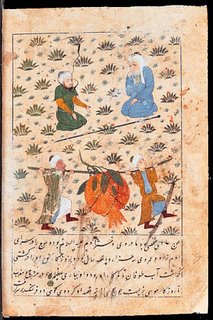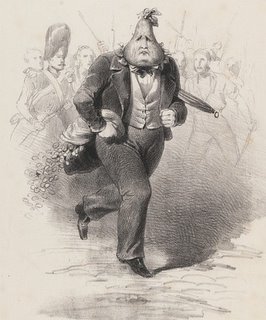 La Poire Tapée
La Poire TapéeLithograph by unknown artist ~1848
"A pear-headed [King] Louis-Philippe runs from an angry crowd while money falls out of abag he carries. The title is a play on words—it can mean a pear that has been dried in the oven, or it can refer to the slang meaning of "taper," to borrow money from someone."
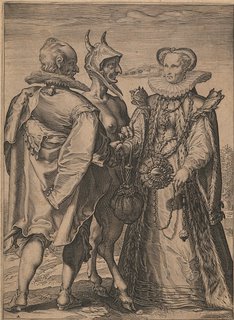 Marriage for Wealth Officiated by the Devil
Marriage for Wealth Officiated by the DevilEngraving by Jan Saenredam ~1600
"The second of three numbered engravings after Goltzius called the Marriage Trilogy. A devil joins the hands of a couple as she blows a stream of coins and smoke, symbolizing the transience of honor and material possessions."
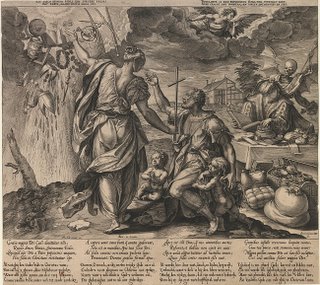 The Two Deaths
The Two DeathsLate 16th century engraving by Hieronymus Wierx after Marten de Vos
"A narrative in two parts. At left, a pious man receives riches from heaven; at right, Death prepares to strike a miser amidst his wealth."
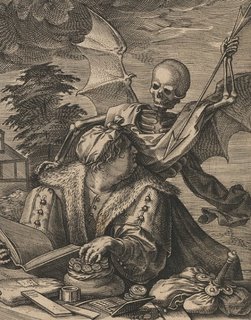
[detail from above]
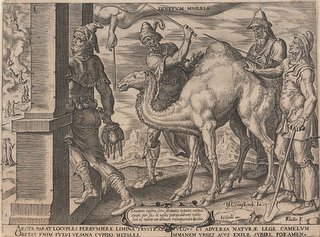 The Unhappy Lot of the Rich
The Unhappy Lot of the RichEngraving by Phillip Galle 1563
"Plate one of his series of six engravings after Heemskerck with this title, published in 1563. A later state, shown here, called
Divitum Misera Sors, was issued by Joannes Galle. Illustration of Matthew 19:23-24. A rich man tries to enter the gate to Heaven, but his money bags hold him back. Behind him, three men try to lead a camel through the eye of a needle."
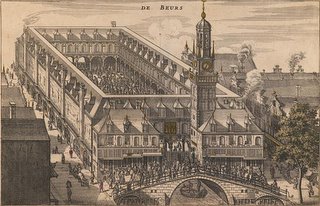 De Beurs Stock Exchange
De Beurs Stock ExchangeEarly 17th century engraving by unknown artist
"The Amsterdam exchange, situated on the Amstel River, was designed by Hendrick de Keijser and opened in 1611. Trading was carried on in the open inner court."
(still going)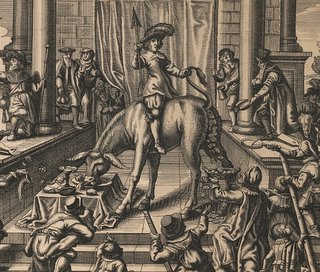 Der Bruder Esel mit dem Gelt
Der Bruder Esel mit dem Gelt [detail]
"An ass is pictured defecating coins while peasants, merchants, and noblemen run to catch them."
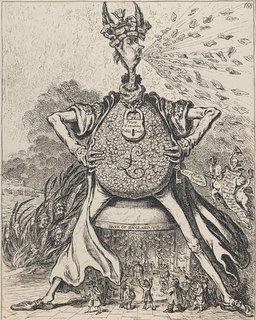 Midas, Transmuting all into Gold Paper
Midas, Transmuting all into Gold PaperEngraving by James Gillray 1797
"[S]atire on the creation of legal tender bank notes by the Bank of England. William Pitt is pictured spewing paper money out of his mouth, while gold coins are locked up in his stomach."
 Le Cornard Contant
Le Cornard ContantEarly 17th century engraving by CLD Ciatres
"Possibly a plate from his
Oiseaux et Grotesques. The "happy cuckold" does not mind his lost honor, because his "horns of plenty" bring him immeasurable happiness. (French caption)."
I think this is a brand new exhibition, which I found completely by accident, searching for a map of all things. There are high resolution images available and I know I've posted a couple of these prints before, including yesterday, but these Harvard files are of a very high quality. The exhibition includes an introductory essay.
 It's magic! It's short on this side...
It's magic! It's short on this side... and long on this side!
and long on this side!  These things make me happy
These things make me happy I like how this girl turned out. I'm curious about other artists that use photos for reference...what features on this girl would you have pushed further? I ignored her face and drew a somewhat generic one, and took more interest in her funny standing pose and hair shape. I added the lip sticking out because I thought the girl's pulled up turtleneck was so cute. I should have made it stick out more!
I like how this girl turned out. I'm curious about other artists that use photos for reference...what features on this girl would you have pushed further? I ignored her face and drew a somewhat generic one, and took more interest in her funny standing pose and hair shape. I added the lip sticking out because I thought the girl's pulled up turtleneck was so cute. I should have made it stick out more!








































